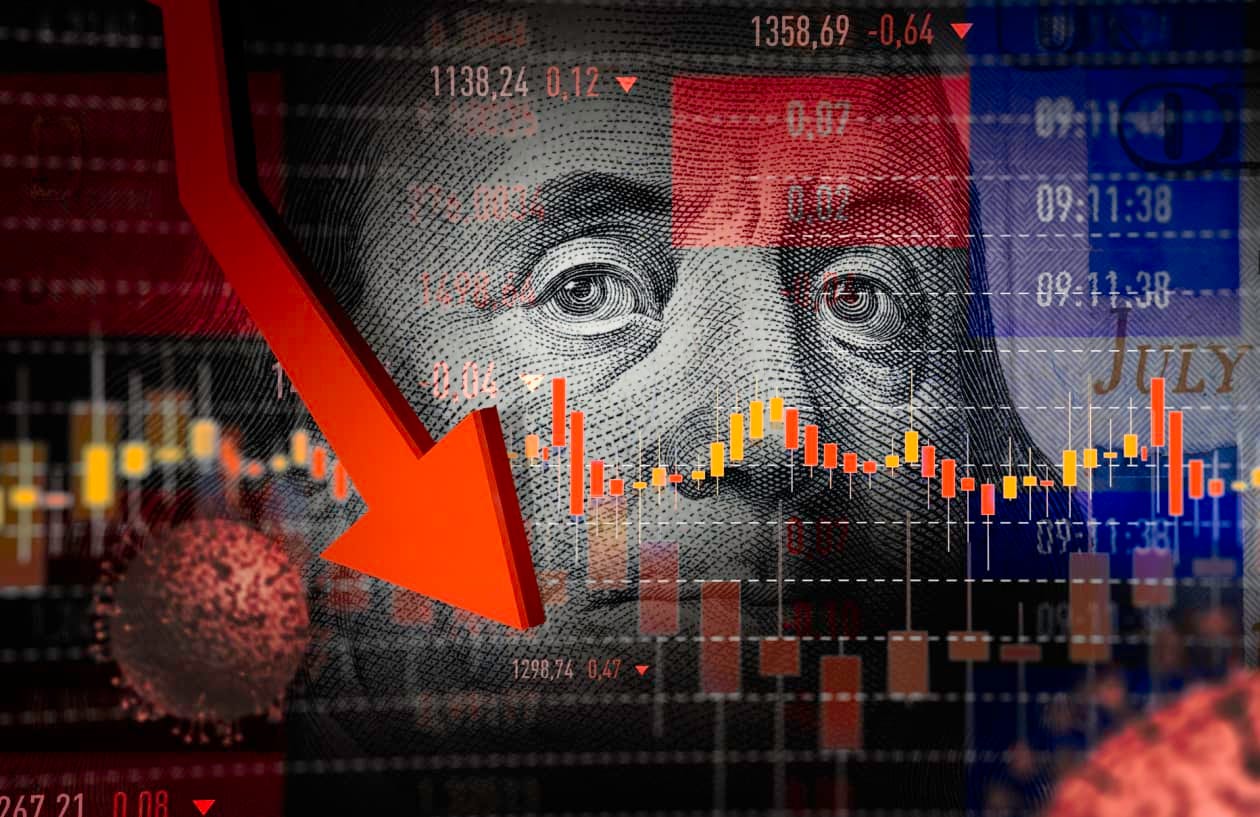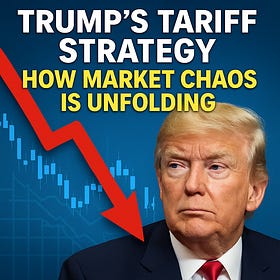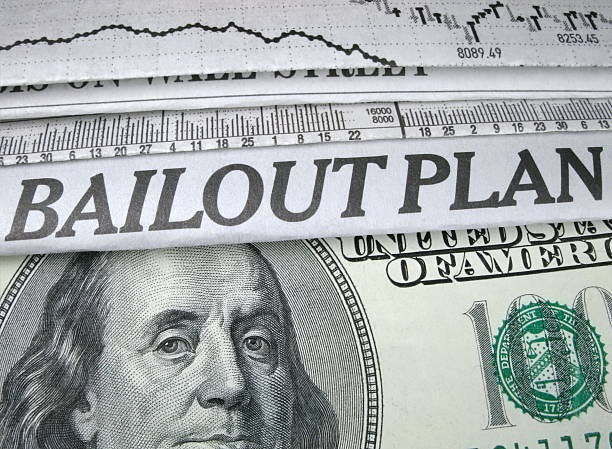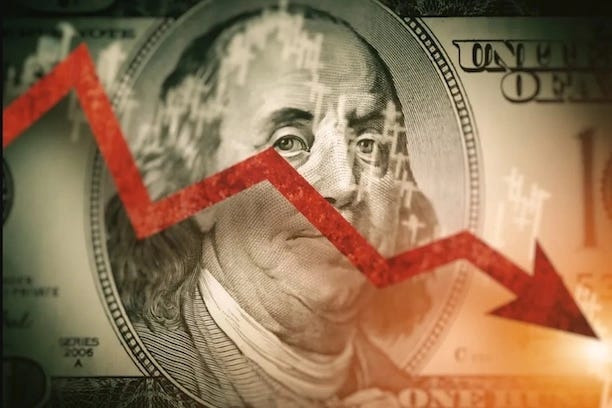In the quiet corners of the financial world, the most critical moves often happen with no fanfare. No headlines. No press conferences. Just quiet adjustments that ripple through the global economy like silent tremors before a quake.
In a recent episode of ITM Trading’s podcast, financial strategist and host Taylor Kenny reveals one of these silent shifts: the Federal Reserve has dramatically slowed its quantitative tightening policy—by nearly 80%—without so much as a whisper in mainstream coverage. While that may sound like a dry bureaucratic tweak, Kenny sees it for what it is: a distress signal from deep within the financial system.
“This isn’t just a policy pivot,” she warns. “It’s an alarm bell.”
In this article, we unpack the full scope of Kenny’s urgent message, examining how leveraged hedge funds now underpin the U.S. Treasury market, why systemic risks are being quietly contained (again), and how a seemingly obscure monetary maneuver hints at a far deeper problem. Each section is broken down with insights and analysis, providing a transparent and accurate account of the conversation—word for word, idea for idea.
But this isn’t just about interest rates or balance sheets. It’s about trust. Stability. And what happens when the very foundation of the global economic system begins to fracture in silence.
The Quiet Pivot: Fed Slows Quantitative Tightening
The Federal Reserve has “pumped the brakes” on its quantitative tightening program, quietly reducing the pace of balance sheet reduction by 80%. Any major announcements or public attention did not accompany this move, but according to Kenny, the implications are massive.
“Some will say it’s about the debt ceiling, others will say it’s a sure signal of an incoming crisis... but the truth is what’s happening right now beneath the financial surface is far more dangerous than most people even realize.”
Kenny contextualizes this change in monetary policy as a strategic retreat, not a sign of victory over inflation or economic stabilization. Quantitative tightening (QT), which involves allowing the Federal Reserve’s holdings of U.S. Treasuries and mortgage-backed securities to mature without reinvestment, is designed to pull liquidity from the financial system. Slowing this process, especially in the face of high inflation and rampant government spending, raises red flags.
The Fed’s decision to slow QT suggests it is grappling with competing priorities: controlling inflation versus maintaining market stability. While inflation remains above the target rate of 2%, a sudden pullback in liquidity suggests deeper concerns about systemic fragility—especially in the Treasury markets. This contradiction between policy goals and actions suggests that monetary authorities are responding to instability, not celebrating progress.
Hedge Funds: The Fragile Backbone of the Treasury Market
“The Treasury market—the foundation of the entire global economy—is being held together by hedge funds.”
Kenny delves into one of the lesser-known but critical dynamics underpinning the U.S. bond market. According to her, hedge funds have become the primary source of liquidity in the Treasury market, propping up what is considered the world’s safest and most important asset class with highly leveraged trades.
“Estimates now suggest that hedge funds make up 11% of the Treasury market with these high-risk, high-leverage trades representing over a trillion dollars’ worth of exposure.”
She explains that these funds are using borrowed money to engage in arbitrage strategies—exploiting small price differences to earn modest returns. However, the massive scale and thin capitalization mean that even minor disruptions could trigger a systemic collapse.
This section reveals the fragility of financial markets. If the Treasury market—the benchmark for global interest rates and the backbone of sovereign credit—is being stabilized by leveraged hedge funds, the system’s resilience is far less than assumed. It also raises critical questions: Why is such a system allowed to operate unchecked? Where are the regulatory safeguards? Kenny’s observations point to a financial architecture that is increasingly reliant on unstable, risk-heavy actors.
A Replay of 2019–2020: Liquidity Crisis and Repo Market Breakdown
“We’ve already seen how this plays out… in 2019 the Fed’s tightening policies followed by COVID led to a liquidity crisis in the repo markets.”
Drawing parallels to recent history, Kenny recalls the September 2019 repo market spike, where overnight borrowing rates skyrocketed, and the Federal Reserve had to inject over $100 billion monthly into short-term lending markets.
“They denied it at the time… but today many have admitted that without that intervention the financial system as we know it would have collapsed.”
Kenny suggests that a similar dynamic is unfolding now. Hedge funds were “never punished” after 2020 and are repeating the same risky behavior, leading to renewed calls for emergency mechanisms.
This comparison underscores how little has changed since the last crisis. The 2019–2020 repo event was a warning shot. Yet instead of reforming risky practices, policymakers opted to quietly patch the cracks with massive liquidity injections. The pattern reveals an unwillingness—or inability—to address structural weaknesses head-on, favoring short-term bailouts over long-term solutions
Trump’s Tariff Strategy: How Market Chaos is Unfolding
Trump’s tariffs were not an arbitrary or punitive measure but rather a necessary defense against China's unfair trade practices, including intellectual property theft, market manipulation, and economic espionage.
Preparing for Bailouts: Crisis Management or Market Manipulation?
“Experts have come out ringing the alarm bell saying that the Federal Reserve needs to make sure that they have a bailout mechanism and emergency facility to help these hedge funds unwind their trades during a crisis.”
Kenny’s tone turns more urgent as she describes how financial institutions and policymakers are already anticipating the fallout. The term “unwind” is used euphemistically, she argues, when what’s actually happening is a bailout of reckless financial speculation.
“Don’t be fooled by it… ‘unwind’ is a soft-sounding word—‘blow up’ would be a better word.”
She argues this is a clear sign that a financial storm is looming and that authorities are preparing to once again save the entities most responsible for the risk-taking, leaving average citizens to bear the cost.
This segment highlights the moral hazard at the core of modern finance. If hedge funds are assured of bailouts, there is no incentive to behave prudently. The notion that the Fed is planning rescue operations for speculative trades reveals systemic capture—where monetary policy serves financial elites rather than the public interest.
Implications for the U.S. Dollar and Global Confidence
“If the only thing holding up the most important bond market in the world that the dollar depends on is borrowed money… that’s not stability. That’s insanity.”
Kenny ties the domestic financial turmoil to a broader geopolitical context. She warns that other nations—particularly BRICS countries like China and Russia—are observing these developments closely.
“Why would they ever want to hold on to US foreign exchange reserves or US dollars?”
In her view, the accelerating move by countries to settle trade in local currencies, stockpile gold, and reduce dollar exposure signals the early phases of a global monetary reset.
The decline of U.S. financial credibility could have profound implications for the global monetary order. If confidence in the dollar erodes, the consequences could include rising interest rates, diminished purchasing power, and a diminished ability for the U.S. to project financial influence. Kenny paints a picture of a slow-moving but inevitable shift away from dollar hegemony, with implications that extend far beyond markets.
What This Means for You: Inflation, Retirement, and Economic Survival
“For everyday Americans, it means increased volatility… more economic uncertainty… less purchasing power.”
Kenny brings the discussion back to a personal level, emphasizing the practical impacts of these systemic dynamics on the average person. From inflation eroding savings to potential losses in dollar-denominated assets like 401(k)s, the risks are tangible and growing.
“Trust in the system, trust in the currency, is broken.”
Her message is direct: the time to prepare is not in the midst of crisis, but before it. She advocates for diversification, particularly into physical gold and silver, as a way to insulate personal wealth from what she sees as an unraveling financial system.
Whether or not one agrees with her specific recommendations, the logic is clear: in times of systemic instability, individuals must proactively protect their assets. Kenny’s warnings are grounded in the premise that structural reform is unlikely, and therefore personal preparedness is essential.
Gold as Insurance: Not a Trade, But a Shield
“Gold is not just an investment… it is your insurance policy.”
Closing the episode, Kenny reiterates her core recommendation—moving into precious metals as a hedge against systemic collapse. She explains that central banks and institutional investors are already doing this quietly, signaling insider awareness of broader risks.
“Why are you trying to time the system when you could be sleeping peacefully at night knowing that your wealth is protected?”
She invites listeners to download a gold and silver guide and speak with analysts to create a protective strategy, framing this as a rational response to a system that is “not designed with you or I in mind.”
Kenny’s emphasis on gold reflects a growing sentiment among financial skeptics that traditional investments are increasingly vulnerable. While not all analysts would agree on gold as the ultimate hedge, it undeniably represents a historical store of value during times of monetary upheaval.
The Silent Collapse: What Happens When Trust Is the First Asset to Vanish?
Taylor Kenny’s analysis isn't a prediction—it's a diagnosis. The Federal Reserve’s rollback of quantitative tightening isn’t a policy adjustment; it's a symptom. A system built on confidence, liquidity, and leverage is quietly revealing its weaknesses. Hedge funds are balancing the weight of global debt markets on razor-thin margins, and foreign powers are watching closely as the dollar’s credibility erodes.
But here’s the real question: if those at the top—the Fed, central banks, and hedge funds—are already shifting, preparing, and insulating… what does that mean for the rest of us?
If the system is this fragile, why is it being hidden behind soft words like “unwind” and “technical adjustment”?
If your retirement, savings, and livelihood are tied to institutions that are now preparing for bailouts, who will look out for you?
If confidence in the dollar fades globally, what truly holds your wealth together?
You don’t need to panic. But you do need to ask the right questions. Because in a system where the rules change quietly, survival favors the prepared—not the reactive.
So ask yourself:
If everything looks stable on the surface, but the people behind the curtain are already preparing for impact—shouldn’t you be doing the same?














